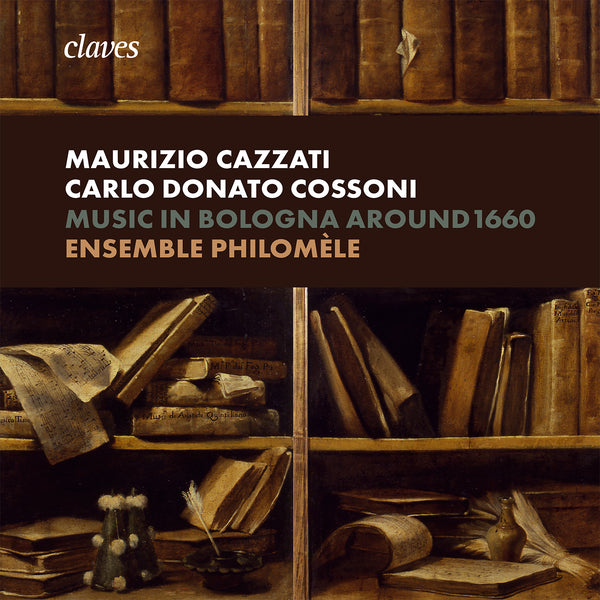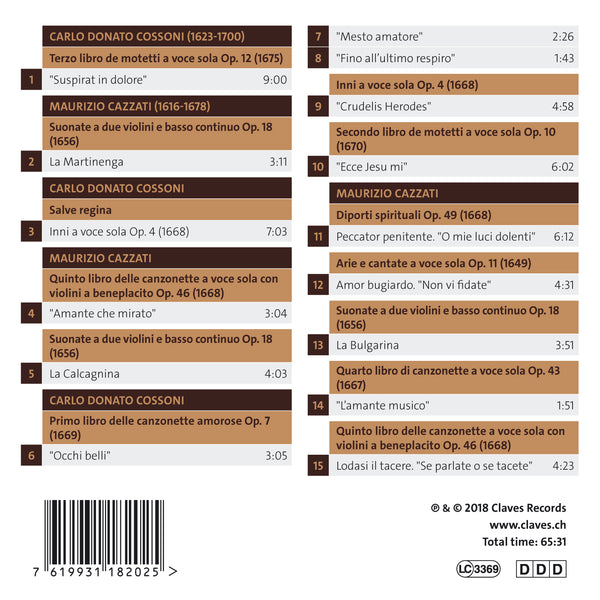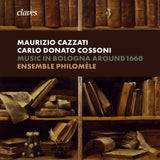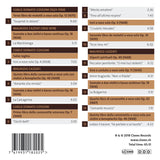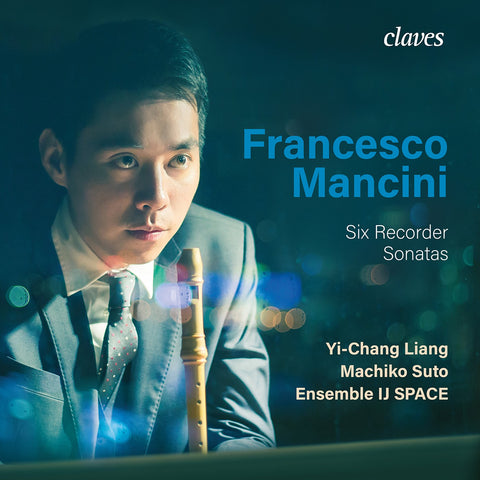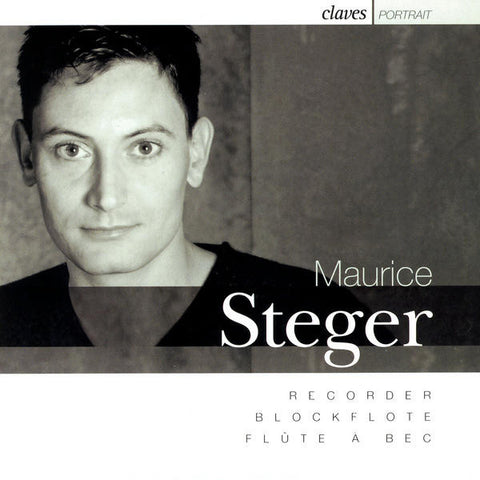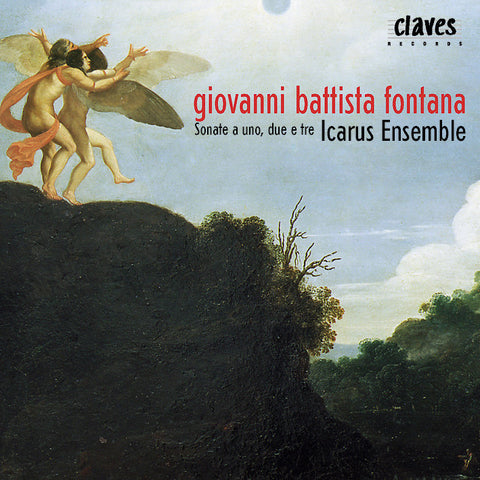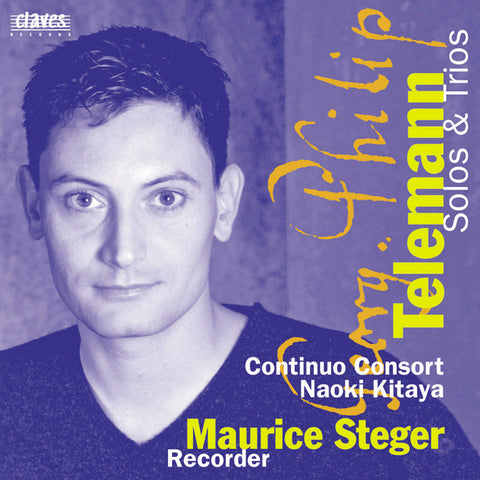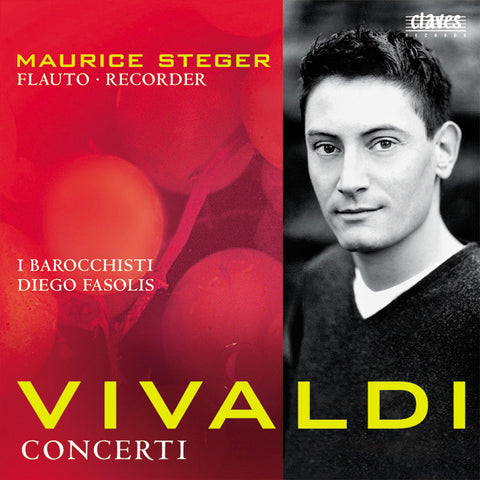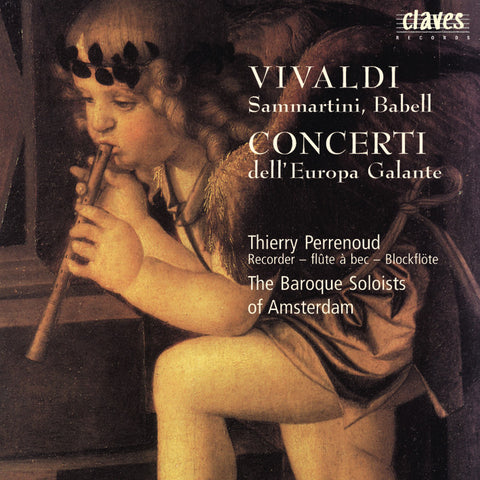(2018) Music in Bologna around 1660 - Maurizio Cazzati & Carlo Donato Cossoni
Category(ies): Ancient music Chamber Oper vocal Rarities
Instrument(s): Guitar Harpischord Organ Recorder Viola Violin
Vocal(s): Soprano
Main Composer: Maurizio Cazzati
CD set: 1
Catalog N°:
CD 1820
Release: 21.09.2018
EAN/UPC: 7619931182025
This album is now on repressing. Pre-order it at a special price now.
CHF 18.50
This album is no longer available on CD.
This album has not been released yet. Pre-order it from now.
CHF 18.50
This album is no longer available on CD.
CHF 18.50
VAT included for Switzerland & UE
Free shipping
This album is no longer available on CD.
VAT included for Switzerland & UE
Free shipping
This album is now on repressing. Pre-order it at a special price now.
CHF 18.50
This album is no longer available on CD.
This album has not been released yet.
Pre-order it at a special price now.
CHF 18.50
This album is no longer available on CD.
CHF 18.50
This album is no longer available on CD.
MUSIC IN BOLOGNA AROUND 1660 - MAURIZIO CAZZATI & CARLO DONATO COSSONI
MUSIC IN BOLOGNA AROUND 1660
The programme offers a fascinating journey through the sacred and the secular, delving into the lives of two major figures of the musical milieu in Bologna in the mid-17th century: Maurizio Cazzati (1616- 1678) and Carlo Donato Cossoni (1623-1700). For both of these “foreigners”, moving to Bologna had a huge influence on their artistic careers. [..] - Luigi Collarile
WHY DID WE CHOOSE TO STAY IN BOLOGNA AND FOCUS ON THE WORKS OF THESE TWO COMPOSERS?
First of all, there is this eternal fascination for Italy. It is a marvellous musical nexus for every musician interested in 17th century music and it has been providing the Ensemble Philomèle with inspiration since the very beginning.
We also owe this inclination to Alice’s unique voice which, in a disconcertingly natural manner, is able to bring life and meaning to these little strophic songs that tend to discourage most interpreters due to the simplicity of their melodies and the length of their texts. An important factor in this choice was above all the discovery - whilst leafing through a shelf of the Nadia Boulanger library in Lyon’s CNSM – of a varied collection of musical compositions, some are clumsy, some are surprising and moving: they are the Canzonette amorose a voce sola by Carlo Donato Cossoni.
This collection of music, the only secular work to be found amongst Cossoni’s abundance of sacred compositions, demonstrates the great freedom of musical experimentation at that time - where various forms are blended together: short recitatives are followed by parts that might resemble something between a ricercar of earlier times and the later fugues, or simple melodies with ritornellos and other symphonies.
The boundary between sacred and secular or even popular music styles is often blurred.
A natural affinity with this musical language fed the curiosity that steered us towards the Biblioteca della Musica in Bologna where we gathered hundreds of pages of music that were photographed from microfilms of old sheet music from the period. After we had played together and performed concerts of Bolognese music of this time, we discovered a clear parallel between the works of C. D. Cossoni and Maurizio Cazzati, who were both musicians at the Basilica of San Petronio. A desire to record a compilation of their compositions began to grow.
We invited other musicians to record with us in order to achieve an instrumentation more faithful to what would have been played years ago in the San Petronio Chapel and we immersed ourselves in the music so that we might – in a similar way to restoring a painting – bring out the colours in the music for your listening pleasure.
Embarking on this incredible musical adventure together represents an important step in our musical careers and we are delighted to be able to share these treasures with you.
Étienne Galletier
L’ENSEMBLE PHILOMÈLE
The Ensemble Philomèle unites five young musicians passionate about early music. Alice Borciani, soprano, Marie Schneider, who plays baroque recorders and cornetto and Gwennaëlle Alibert who plays harpsichord, all met during their studies at the Schola Cantorum Basiliensis in Basel (Switzerland). They were joined by Étienne Galletier, a theorbo player who graduated from Lyon’s CNSM (Conservatory of Music) and then by the viol player, Julie Dessaint. Together, they explore 17th century repertoire with a particular leaning towards the “Stylus Phantasticus”.
In 2011, they recorded The Pleasures and Vanities of the Nightingale, a CD of descriptive music inspired by the symbol of this nocturnal bird in 17th century Italian music.
Since 2014, they have been sifting through the musical treasures found in the Biblioteca della Musica of Bologna and unearthing forgotten compositions by Carlo Donato Cossoni and Maurizio Cazzati. These discoveries inspired them to create a concert-show called L’Echappée du Couvent (The Convent Breakaway) that was directed by Gaëtan Aubry and to make a recording of the Cazzati /Cossoni programme – which involved another cornetto and a violin – in 2016. For these recordings, they were joined by the violinist Clémence Schaming and the cornetto player Liselotte Emery.
The Ensemble Philomèle have been invited on artistic residencies to Pigna’s Centre Culturel Voce (Corsica), the Cité de la Voix in Vézelay and to stay with the Dominicans of the Centre culturel de rencontre des Dominicains de Haute-Alsace in Guebwiller (France).
“Philomela laments the incestuous crime of Tereus, she, who was once a silent young girl is now a bird who speaks out.” Martial, Volume 14, 1st century AD.
Philomela is known as “the song’s friend”. In Ovid’s Metamorphoses, Philomela is a young girl, kidnapped by her brother-in-law, Tereus, who cuts out her tongue in order to ensure her silence. Jupiter ends up transforming her into a nightingale. According to Pliny the Elder (1st century AD) the birdsong of this small creature comes close to the skills of the flute.
MUSIC IN BOLOGNA AROUND 1660
The programme offers a fascinating journey through the sacred and the secular, delving into the lives of two major figures of the musical milieu in Bologna in the mid-17th century: Maurizio Cazzati (1616- 1678) and Carlo Donato Cossoni (1623-1700). For both of these “foreigners”, moving to Bologna had a huge influence on their artistic careers. [..] - Luigi Collarile
WHY DID WE CHOOSE TO STAY IN BOLOGNA AND FOCUS ON THE WORKS OF THESE TWO COMPOSERS?
First of all, there is this eternal fascination for Italy. It is a marvellous musical nexus for every musician interested in 17th century music and it has been providing the Ensemble Philomèle with inspiration since the very beginning.
We also owe this inclination to Alice’s unique voice which, in a disconcertingly natural manner, is able to bring life and meaning to these little strophic songs that tend to discourage most interpreters due to the simplicity of their melodies and the length of their texts. An important factor in this choice was above all the discovery - whilst leafing through a shelf of the Nadia Boulanger library in Lyon’s CNSM – of a varied collection of musical compositions, some are clumsy, some are surprising and moving: they are the Canzonette amorose a voce sola by Carlo Donato Cossoni.
This collection of music, the only secular work to be found amongst Cossoni’s abundance of sacred compositions, demonstrates the great freedom of musical experimentation at that time - where various forms are blended together: short recitatives are followed by parts that might resemble something between a ricercar of earlier times and the later fugues, or simple melodies with ritornellos and other symphonies.
The boundary between sacred and secular or even popular music styles is often blurred.
A natural affinity with this musical language fed the curiosity that steered us towards the Biblioteca della Musica in Bologna where we gathered hundreds of pages of music that were photographed from microfilms of old sheet music from the period. After we had played together and performed concerts of Bolognese music of this time, we discovered a clear parallel between the works of C. D. Cossoni and Maurizio Cazzati, who were both musicians at the Basilica of San Petronio. A desire to record a compilation of their compositions began to grow.
We invited other musicians to record with us in order to achieve an instrumentation more faithful to what would have been played years ago in the San Petronio Chapel and we immersed ourselves in the music so that we might – in a similar way to restoring a painting – bring out the colours in the music for your listening pleasure.
Embarking on this incredible musical adventure together represents an important step in our musical careers and we are delighted to be able to share these treasures with you.
Étienne Galletier
L’ENSEMBLE PHILOMÈLE
The Ensemble Philomèle unites five young musicians passionate about early music. Alice Borciani, soprano, Marie Schneider, who plays baroque recorders and cornetto and Gwennaëlle Alibert who plays harpsichord, all met during their studies at the Schola Cantorum Basiliensis in Basel (Switzerland). They were joined by Étienne Galletier, a theorbo player who graduated from Lyon’s CNSM (Conservatory of Music) and then by the viol player, Julie Dessaint. Together, they explore 17th century repertoire with a particular leaning towards the “Stylus Phantasticus”.
In 2011, they recorded The Pleasures and Vanities of the Nightingale, a CD of descriptive music inspired by the symbol of this nocturnal bird in 17th century Italian music.
Since 2014, they have been sifting through the musical treasures found in the Biblioteca della Musica of Bologna and unearthing forgotten compositions by Carlo Donato Cossoni and Maurizio Cazzati. These discoveries inspired them to create a concert-show called L’Echappée du Couvent (The Convent Breakaway) that was directed by Gaëtan Aubry and to make a recording of the Cazzati /Cossoni programme – which involved another cornetto and a violin – in 2016. For these recordings, they were joined by the violinist Clémence Schaming and the cornetto player Liselotte Emery.
The Ensemble Philomèle have been invited on artistic residencies to Pigna’s Centre Culturel Voce (Corsica), the Cité de la Voix in Vézelay and to stay with the Dominicans of the Centre culturel de rencontre des Dominicains de Haute-Alsace in Guebwiller (France).
“Philomela laments the incestuous crime of Tereus, she, who was once a silent young girl is now a bird who speaks out.” Martial, Volume 14, 1st century AD.
Philomela is known as “the song’s friend”. In Ovid’s Metamorphoses, Philomela is a young girl, kidnapped by her brother-in-law, Tereus, who cuts out her tongue in order to ensure her silence. Jupiter ends up transforming her into a nightingale. According to Pliny the Elder (1st century AD) the birdsong of this small creature comes close to the skills of the flute.
Return to the album | Read the booklet | Composer(s): Maurizio Cazzati | Main Artist: Ensemble Philomèle







